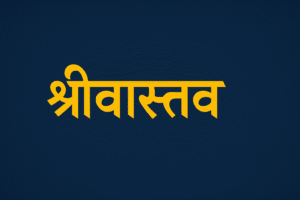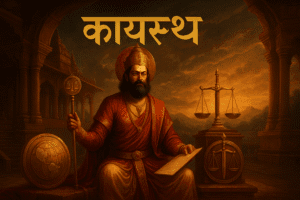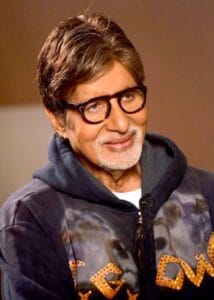Caste and Title in the Srivastava Family: Legacy, Lineage, and Modern Identity
Discover the amazing secrets of Srivastava family caste and titles. Explore thrilling heritage stories that shaped modern identity and lineage traditions.
Introduction In the vast, intricate tapestry of Indian society, surnames offer more than just a window into one’s lineage and history, but into one’s family, caste, profession, region, and sometimes even social aspiration. The “Srivastava” is one of the most popular and scholarly surnames of North India. But what does it truly mean? Is it a caste, a denomination, a community, a symbolic inheritance?This post will look in detail at the history, meaning and development of the name Srivastava, looking from its origins in the ancient texts to the world today. Taking culture, history, and the modern world into account, we’ll clue you in on what’s real and what isn’t and uncover the human tale behind the name “Srivastava.”
Srivastava: Caste or Title?

Srivastava Modern Kshatriya are also — caste and a title of a caste-based subgroup. Srivastava is a predominant surname of Kayastha, Kayastha community.
Kayasthas are mainly spread in Uttar Pradesh, Bihar, Madhya Pradesh, and Bengal and Delhi.
Caste Background: In the traditional hierarchy of Indian varna Kastha were never placed in the four-fold system of the society. On the venn diagram of caste, they are the intersection between brainy Brahmins and buff Kshatriyas, which gives them their own peculiar social-religious position.
Title Origin: The surname Srivastava has its roots in the Sanskrit words “Sri” (meaning wealth, prosperity, or goddess Lakshmi) and “Vastava” (from vas, meaning to dwell or reside).
So, “Srivastava” can be translated as “one in whom prosperity is established” or “house of the goddess of prosperity (Lakshmi)”, which essentially implies a person having such qualities.
What had started out as an honorific or sobriquet became a full-fledged hereditary surname not only in Matihani, but among the Kayasthas as a caste group in general.in course of time.
Origin The Srivastava lineage finds its origin through the Sons of Yayaati.
A. Mythological Origins
Most of this caste title claim their origin from the divine scribes of Lord Yama, the Hindu god of death. According to belief:
Chitragupta emerged as an entity derived from the mind and heart of God Brahma and personifies both knowledge and justice.
He had 12 sons, who formed 12 sub-clans or gotras of Kayasthas.
Srivastava is for the first gotra known as the “eldest” and therefore revered gotra in the community.
B. Historical and Administrative Role
Kayasthas, particularly the Srivastava subgroup, played an important role in the administrative mechanisms during the Maurya, Gupta, Mughal and British eras. Their roles included:
Court scribes
Revenue collectors
Accountants
Royal advisors
Sanskrit, Persian, and eventually English speaking linguists
Their intellectual capital also rendered them indispensable to empires, and helped them to slip fluidly between Hindu, Islamic and colonial rule, something few Indian castes have managed.
Socio-Cultural Identity of Srivastava
A. Language and Region
The language is mainly spoken in Hindi speaking areas such as Uttar Pradesh, Madhya Pradesh, Bihar and Delhi.
This title is common surname in U.S, UK and Mid east among diaspora.
Although traditionally they speak Hindi and Sanskrit languages, many speak other languages such as Awadhi, Bhojpuri and Maithili.
B. Customs and Practices
Rituals Srivastava’s are high in Brahmical rituals like Upanayana, wedding and practising Vedic traditions.Some of them are Shaivite some are Vaishnavites and there are even few of them who are inclined towards the reformist movements of the colonial period such as Arya Samaj and Brahmo Samaj.
Modern Perceptions and Aspirations
In contemporary India surnames continue to serve as an indicator of class and professional background, except that traditional spelling distinctions have blurred, and itnal traditions are no longer absolute. Srivastavas are widely regarded as:
Educated and achievement-oriented: Brother after brother has distinguished himself in bureaucracy, politics, academics, law and corporate life.
Modern but traditional: Embracing modernity, many Srivastava families continue to preserve traditional customs and traditions.Non-reservation status: Since they as a (general or unreserved) category compete in open merit groups (education and jobs) with corresponding such groups among other castes, a competitive or ambitious flavour may get added to their thought, conduct, and action.
Notable Persons with Last Name Srivastava

A number of kayastha have contributed outstandingly to Indian society;
Amitabh Bachchan (born Amitabh Srivastava): A Kayastha by ancestry, the name was also his original surname before the adopted title by which he was known for decades.
Harivansh Rai Bachchan: Noted Hindi poet and Amitabh’s father.
Manoj Srivastava was former IAS officer and film person.
Avinash Srivastava: Known for Indian finance administration.
Rajeev Srivastava: The king of stand comedy and also an actor.These examples point to a range of fields in which Srivastava have made their mark narratives to bureaucracy, entertainment to entrepreneurship.
Kayastha vs Srivastava: Cut the confusion here
It’s important to understand that:
Kayastha is like a tree and it is the larger caste.
this title is sub-branch of that tree (sub-caste).
Other Kayastha subgroups include:
Mathur
Saxena
Nigam
Gaur
Bhatnagar
Karna
Ambastha (in Bengal and Bihar)
All of them have different lineages And slight differences in customs, but all are included under Kayasthas.
Srivastava and The Global Identity Also read: Srivastava in the World Participants in Diaspora and Global Identity
Today, this title can be found across the globe — from New Jersey and Panama to New Zealand and Dubai. Whereas the early wave of immigrants were professionals in medicine, engineering and academia, the newer generations include:
Startups and tech entrepreneurship
Filmmaking and content creation
Policy and think tanks
Global NGOs and human rights groups
Their international mindset is frequently complemented by a firm sense of culture — observing festivals such as Diwali and Holi with the same enthusiasm as academic success.
Challenges and Misconceptions
A. Misunderstood Caste Status
Some also consider Srivastavas to be Brahmins because of their rituals.
Still others regard them as administrative groups without any religious import.
In fact, they are located at a crossroads of intelligence and government.
B. Difficulties in the Contemporary Caste Narratives
With the rise of caste-based reservation politics, it is the much feeling among the Srivastava of being left behind in spite of their historical role of builders of society. Their general-category status often means:
Limited access to affirmative action
Fierce competition in merit-based exams
Underrepresentation in political discourse
But many in the community are fast proving that the answer is no.
Future of Immediately Identity in The Changing India
In a cosmopolitan and digital India, surnames are fading and finding new meaning.
For the younger who grow up in urban metros, their affinity to their caste-based identity may not have been strong but their pride in their intellectual legacy, once bequeathed by their forebears, was a different matter.
In the rural and semi-urban pockets, the surname still has social significance, particularly when it come to matrimonial alliances and community clout.
Online, the last name has become associated with LinkedIn, YouTube, academic papers and start-ups.In the end, in the evolving metamorphosis of the Srivastava identity, it seems to have transitioned from being just a caste identity to a sacred name of tradition, education, and modern, urban Indian values.
Conclusion
The Srivastava last name is not just a suffix on official papers — it is centuries worth of a cultural storybook. From the mythic pen of Chitragupta to the digital pens of today’s content writers, Srivastavas have been shaping, and getting shaped by, India’s socio-political passage.
It’s a congregation that resembles India’s own paradoxes: ancient yet resourceful, caste-bound yet liberal, kaleidoscopic but also unvarnished.
And we enter an age also that challenges caste and avows culture, the legacy of the Srivastava becomes a beacon – a reminder that identity is not only a legacy but an ongoing act of retrieval.


